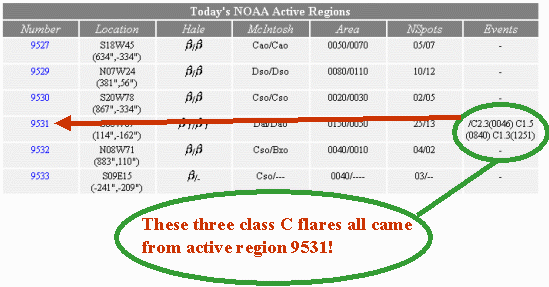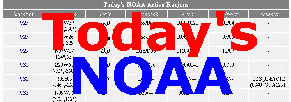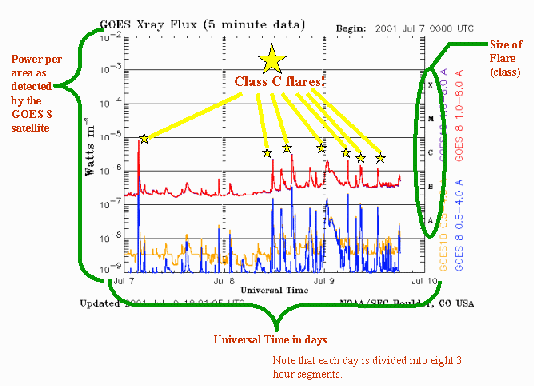How To Find Your Solar Flare Information
To complete your data table each day you will use two tools: a graph
of data from the GOES 8 satellite and an Active Region Table from NOAA.
First, take a look at the GOES plot below. Click on the
HOW? button to find out how
scientists can use similar plots to analyze active regions.

The plot in red shows data from the GOES 8 satellite. The spikes
represent solar flares. You can determine the size of a flare by looking
at the scale on the right side of the graph.
Can you see that
four class C flares occurred on July 9th?
Now that you can find flares on a GOES 8 plot, check out the NOAA data table below to see how you can determine which active regions flared.
Big Bear Solar Observatory has a neat table of NOAA daily active regions.

Are you ready to begin your diary? Just click on the buttons below to take you to today's data. Don't forget that to get back to this website you just click on the back arrow!

|

|

|
|
||||||||||||||||||||


